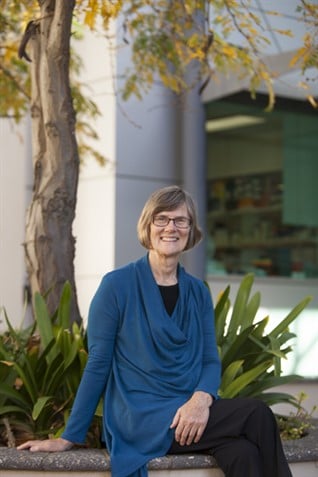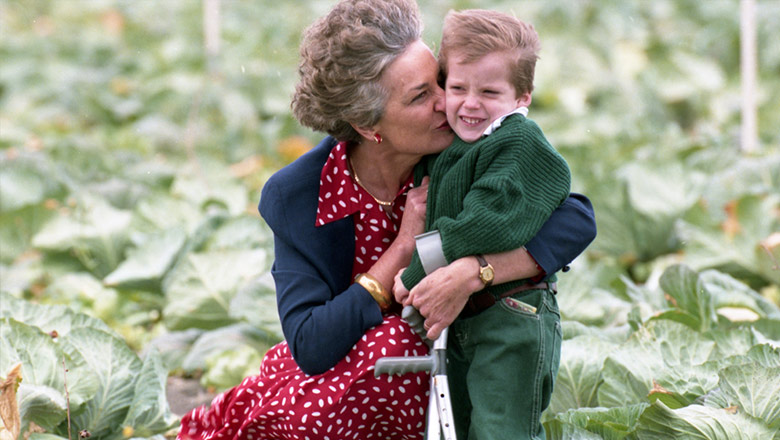
The journey to folate fortification
To transform a promising decline in a research graph into lives saved and disability prevented takes hard work, determination and a special partnership such as that found between Professors Carol Bower and Fiona Stanley.
They were the driving force behind what The Kids Research Institute Australia now counts among its greatest achievements - successfully advocating for the mandatory fortification of flour in Australia with the vitamin folic acid for the primary prevention of neural tube defects.
Together they made “the perfect combo”. Professor Bower admits while she had tended to be “critical and cautious, yet veering a bit towards paralysis,” when their number crunching had initially revealed the extent to which dietary folate was protective, Professor Stanley had urged her on to act “now”.
Looking back, Professor Bower can remember the first goose-bump-making moment when they realised there was the potential for significant lives to be saved and disability prevented through folate. Those gains to be achieved by ensuring adequate folate levels in the diet of women before conception, reducing the risk of disruptions in the developing baby’s neural tube as it closes within the few weeks following conception.
“In proper scientific spirit, we were initially not convinced folate was the vitamin of choice,” Professor Bower said.
“But in the 1980s at the University of WA Medical School, when I had eventually crunched the numbers from our case control study, we churned out the answer and there we saw a protective effect.
“That was really the first evidence that increasing dietary folate reduced the risk of neural tube defects. It was pretty exciting.”
When international randomised control trials confirmed in 1991 what could be achieved with folate, it was a call to action for Professor Bower and Professor Stanley and the newly-formed The Kids Research Institute Australia.
They launched an Institute-led WA Health Department public health campaign asking women considering starting a family to take folic acid supplements and eat folate-rich foods. It was a world first.
Their lobbying then contributed to food companies being allowed to voluntarily add folate to their products, with this mainly occurring in cereals.
During this campaign, Professor Stanley had found herself standing in the pouring rain in a muddy folate-rich vegetable garden in Perth before a huddle of photographers and TV cameras trying her hardest to get the WA public to understand that the protective qualities of folic acid was something worth getting really excited about.
By 1996, a startling 30 per cent drop in neural tube defects had already been recorded in WA. These included spina bifida and anencephaly, a fatal condition where the skull and underlying brain do not develop.
“When I crunched the numbers for neural tube defects in 1996 and 1997 (following the public campaign and voluntary fortification) and saw that it was the lowest it had been since measuring neural tube defects in WA, I showed Fiona and she was ready to call the newspaper,” said Professor Bower. 
“I said it could be just a random blip – but it proved not to be”.
But still neither researcher was prepared to stop there.
“The fall in neural tube defects was clear but not as much as predicted, hence further research was needed to ascertain those not responding to health promotion,” said Professor Stanley, Institute Founding Director and Patron.
Worried about the 40 per cent of WA mothers whose pregnancies were unplanned, as well as low-income and indigenous groups not using supplements, they pushed on.
Professor Bower and Professor Stanley then spent another decade finding the further scientific evidence needed to breakdown barriers and opposition to the addition of folate to all bread products through a new Australian food law.
The research done at the Institute, commissioned by Food Standards Australia New Zealand, made a major contribution to the decision of Food Ministers, in June 2007, to introduce mandatory fortification in Australia by September 2009. It was estimated the fortified flour could eventually result in an Australia-wide fall of neural tube defects by up to 14 per cent.
Already in WA, there are now indications of an additional post-mandatory-fortification fall in neural tube defects in data collected from 2009 onwards being analysed by the WA Register of Developmental Anomalies. Changes in Australian-wide data are expected to be reported on later his year by the National Perinatal Epidemiology and Statistics Unit.
Recent red cell folate measurements in selected WA indigenous communities have also revealed folate deficiency in adult sample groups has fallen from 10 per cent to none. Neural tube defects in indigenous infants are now also on the decline.
But for Professor Bower the wait for these gains has been frustrating knowing what was at stake.
“The mandatory fortification did seem to take a long time,” she said. “There was firm evidence in 1991-92 and it was not until 2009 that it was approved. It was a bit frustrating when the mandatory fortification bureaucratic and legal process was going through and there were lots of arguments tossed around that were not based on fact.
“There have been a lot of babies that have had a neural tube defect since the early nineties that might otherwise not have, if we had been able to ensure earlier that every pregnancy had enough folate on board.”
Preventing neural tube defects with folic acid has recently been labelled as one of the great medical advances of the 20th century. The Kids researchers continue to be regarded as the pre-eminent group in this field in Australia, with invitations to serve on national and international committees, including with the World Health Organisation and the US Centres for Disease Control and Prevention.
“There are so many wonderful people we have worked with over the years and without whom all this work could not have been done,” said Professor Bower.
Folate has also helped open up the minds of the public to the importance of the pre-conception health of the mother, now shown to be a crucial foundation in the emerging field of developmental origins of health and disease.
Throughout the fight for mandatory fortification, Professor Stanley remained confident.
“I never ever thought we would lose the fight to fortify, it was just difficult,” she said.
“We had the government officials and the public on board but the food industry fought it hard, which astonished me. I had thought this was a win-win for them and us.
“They resisted because they did not want to be told what to do.
“Having the evidence that fortification was successful and that voluntary health education failed the poor, Aboriginal mums, and those with unplanned pregnancies, was powerful to make our case that we needed to fortify to get to all women.
“We knew we were right and fought it as a social justice issue.”
What’s next?
“We need to still keep monitoring what is happening with neural tube defects and look at other groups in the population,” said Professor Bower. “We have an increase now in migrants from countries where their usual diet might not include much in the way of bread and they may not be getting adequate folate. We need to look at them and see if the rates of neural tube defects are high for them.”
